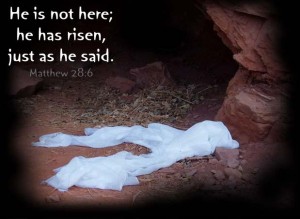 The Pew Forum on Religion & Public Life announced that “nones” [those with no religious affiliation] are “on the rise” and “growing at a rapid pace.” [Click here for the Pew Forum reports] Some 20 percent of Americans, including a third of adults under 30, “have no religious affiliation”….
The Pew Forum on Religion & Public Life announced that “nones” [those with no religious affiliation] are “on the rise” and “growing at a rapid pace.” [Click here for the Pew Forum reports] Some 20 percent of Americans, including a third of adults under 30, “have no religious affiliation”….
The immediate interpretation… is that secularization, so familiar to Western Europe, Canada, and elsewhere, has caught up to the United States. Further, given that Millennials are the least affiliated generation in American history and unlikely to affiliate as they age, the “religious recession” is not about to end anytime soon.
No question—the percentage of Nones is up, but partly because of cultural inflation. These days, people who don’t belong and don’t believe can tell things the way they are…..
From the 1970s through the 1990s, we chalked things up to secularization… [however] I now am convinced that neither secularization nor revitalization theories accurately describe what is taking place in Canada and elsewhere, including the United States. Global data make it very clear that, in every society across the planet, religion persists—along with the inclination of some people to take a pass on religion.
Therefore, rather than speaking of one-way trends toward secularization or revitalization, it seems more accurate and helpful to view pro-religion and no-religion as the poles of a dynamic continuum. At any point in time, a society’s inclination to opt for one over the other will vary, depending on “pro-religion” and “no-religion” factors that are organizational and cultural in nature. But the proclivity to opt for religion will always co-exist with the proclivity to reject it, with noteworthy numbers of people occupying something of an ambivalent middle.
…In using the term [polarization], I am speaking simply of the inclination of populations to embrace religion versus reject it…. While some observers may be startled by the growth of Nones in the United States and see ongoing secularization as virtually inevitable, I am not among them. The reason is that so-called “American religious exceptionalism” is simply proving not to be so exceptional after all. Historically, the religious polarization continuum in the U.S. has been weighted heavily on the pro-religion side. Currently, there is some modest movement in the direction of the no religion side. Such balance between religion and no religion is universal.
But, as with elsewhere, the story is hardly final and we need to keep the camera running. The religion market is always “up for grabs.” Following [historian Rodney] Stark, the increase in the percentage of Nones means the opportunity exists for religious groups to increase their market shares. Apart from outcomes, there is little doubt we will see accelerated activity in the American religious marketplace.
An important word of caution: my research in Canada has been showing, that, at least to date, residence in the no religion category often tends to be short-lived. Many teenage Nones are looking to religious groups for rites of passage that may result in reaffiliation. Nones who marry “Somethings” frequently raise their children as “Somethings” and not uncommonly follow suit. Further, large numbers of adult and teenage Nones indicate they have not slammed the door on involvement that they deem to be worthwhile.
In Canada, the reality of religious polarization is a far cry from what was anticipated by theories of linear secularization. It is literally A New Day for religion, where market demand remains high, precisely at a time when growing numbers are rejecting religion. Changing demographics and varied market performances are contributing to a restructuring of players. But the inclinations to embrace religion and reject religion co-exist, with the balance always in dynamic flux. Such religious polarization, as I’ve been emphasizing, is found everywhere–even now, as the Pew Forum data remind us, in the United States.
A cause for pause? The inclination of Americans to opt for “pro-religion” or “no religion” will depend largely on how the nation’s religious groups collectively respond with life-enhancing ministry. The news of the rise in Religious Nones does not signal demise and doom for religion. On the contrary, it signals new opportunities, and the need for appropriate responses.






 If your church doesn’t have a presence on Facebook, you may be missing out on an effective communication tool for engaging members and potential visitors.
If your church doesn’t have a presence on Facebook, you may be missing out on an effective communication tool for engaging members and potential visitors.
